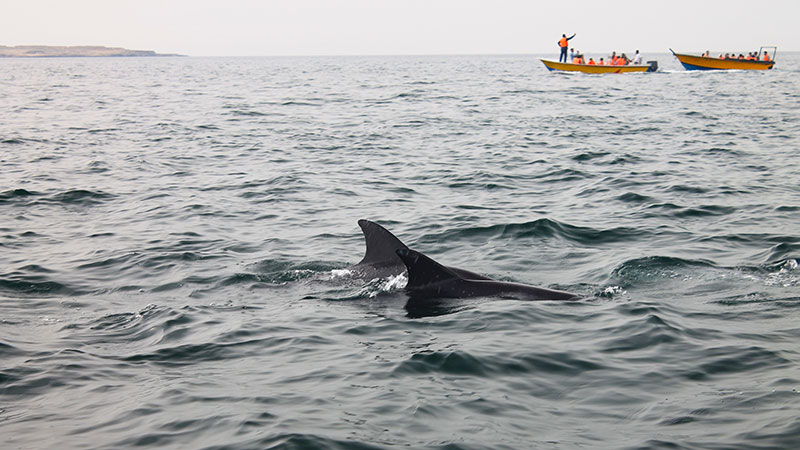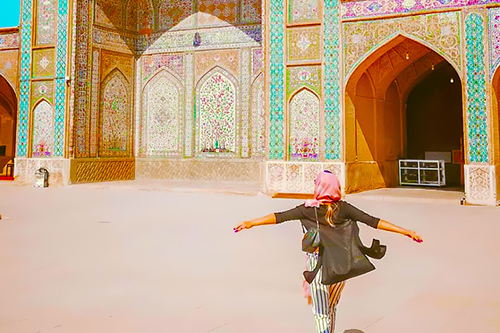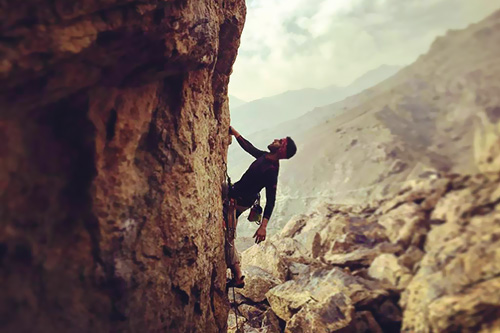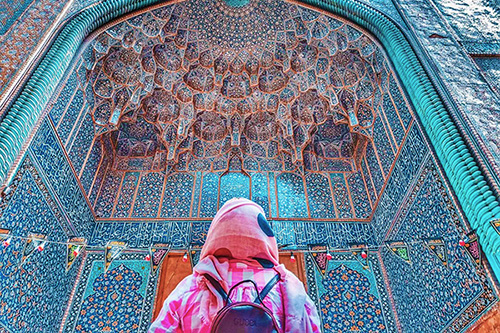 Signin with Google
Signin with Google Signin with Facebook
Signin with Facebook About Iran
About IranTop Things to Do in Qeshm Island

While knowing the grandeur of Persepolis, the beauty of Isfahan, and the mystery of the deserts, few visitors know about the wonders of the Persian Gulf. Yet, if you dream about a blue sea, pristine and colourful beaches, wild landscapes and rich culture, the islands of the Persian Gulf are for you. The biggest island, Qeshm, holds many treasures, that visitors can even discover without a visa as it's a free-trade zone. Here are the most beautiful attractions of Qeshm and its neighbouring islands.
The Valley of Stars
Take a deep breath while entering the Valley of Stars, one of Qeshm's most exceptional sites, a true natural masterpiece. This place is filled with majestic gorges, canyons, and pillar columns formed millions of years ago by the erosion of soil, stone, and sand. Inhabitants believe that a star once fell from the sky right to this place. Due to the collision, stones and soils would have been thrown in the air and frozen, hence the incredible shapes of these structures. This rare geological phenomenon is indeed a delight for the eyes and the imagination, as you can try to guess animals shapes and faces carved in the giant formations. While wandering in these magical surroundings, wait for sunset and appreciate a breathtaking sky full of stars. Beware: locals believe that the geo site is inhabited by spirits and that the sound of the wind caught between the gorges is, in fact, the sound of their voices.

Chahkooh Canyon
With the Valley of Stars, Chahkooh Canyon is one of the unmissable wonders of Qeshm Island. It's also an exceptional geological site, formed by centuries of erosion by the waters and the winds. Walking in the narrow gorges and sinuous paths of this canyon, between the sandy colour of the rock and the deep blue of the sky, is an unforgettable experience. The rounded edges of the sculpted rock create perfect harmony as if nature was dancing under your eyes. Visitors can also see old wells dig into the natural holes in the rock, which have given its name to the site, literally "mount wells". This site is also known as The Great Canyon of The Middle East and is inscribed as a Unesco Global Geopark site.

Bandar-e Laft
In this small fishermen village, located on the northern coast of Qeshm, life quietly goes on as it used to for centuries. This place is ideal to observe the authentic lives of locals and the tradition of Bandari people, who are the main ethnic group of the island. Architecturally, this small port is also a testimony of the past, with its small mud-bricks alleys, its numerous badgirs, the windcatchers for which Yazd is famous for, and its traditional water reservoirs. Climb near the ruins of Naderi Fort, a castle built by the Portuguese, to watch the sunset over the skyline of the village and the endless horizon of the Persian Gulf.

Mangrove Forest (Hara sea forest)
Mangrove Forests are a unique and crucial ecological environment, home to thousands of species of animals and plants. On the northern coast of Qeshm Island is the largest mangrove forests of the region, 8000 hectares of a protected area that displays stunning and rich wildlife. Navigating under the calm water of the mangrove and between its lush vegetation, witness in a quiet and peaceful atmosphere a show of animals such as sea turtles, herons, pelicans, etc. It's one of the best places to participate in birdwatching as thousands of migrating birds find here a refuge.

Kharbas Cave
One of the most beautiful caves of Iran can be found on the island of Qeshm: Kharbas Cave is not just a stunning geologic formation but also a historical place. Naturally carved almost 3000 years ago by the decrease of water level, this cave was used during the era of the Medes, the first Persian Empire up until the Sassanid Empire. The usage of this cave is wrapped in a mystery, but some archaeologists believe that it may have been a temple for the followers of Mithraism or the believers of the Goddess of water, Anahita. This outstanding work of rock-cut architecture is a maze of rooms and corridors, whose walls display several carvings and heliographs that recall forgotten stories.
Namakdan Salt Cave
Let yourself be wrapped by total darkness and discover an underground world of salt. Namakdan is the longest cave in the world, as it is more than 6 kilometres long. Besides this record, it's fully covered from top to bottom of salt formations. Stalactites of salt are falling down the ceilings which display strange shapes, while dome salt emerges from the surfaces in the long and narrow corridors of the cave.
Naz Islands
Naz islands are two very tiny islands situated about a kilometres away from the shores of Qeshm. They are exceptional ecosystems with their unique coral beds. During the low tides, visitors can walk from the beach of Qehsm to the islands of Naz, which get separated during the high tides. The shores of the beach are a pleasant place to experience camel riding, simply have a walk on the sand, or enjoy the sunset and a sky full of stars.
- Islands around Qeshm
Hormuz Island
This small island is a true paradise with landscapes of red sand beaches over the deep blue sea. Hormuz Island, which is easily reachable by ferry from Qeshm, offers many wonders for visitors eager to discover the splendours of nature. With very few inhabitants, a trip to this island gives a sense of being on another planet, surrounded by lunar landscapes and valleys of colourful mountains with shapes of red, blue, yellow, and grey. Among the most beautiful attractions of Hormuz are the red sand beach, the strange the Valley of Statues, with its petrified salt formations, and the Rainbow Valley. Have a look at the Portuguese castle, made out of red stones, before resting on one of the many golden sand beaches of the island.

Hengam Island
Located at a very short distance from Qeshm, this tiny island is filled with stunning rock-formations and pristine beige sand beaches. Many visitors come here to enjoy the show produced by large numbers of dolphins playing freely in the sea. The crystal-clear waters reveal the abundance of the sea, inhabited by thousands of species of colourful fishes, sea turtles, and corals. This fishermen island has a pretty traditional market where the best seafood is cooked and colourful local handicrafts are sold.





